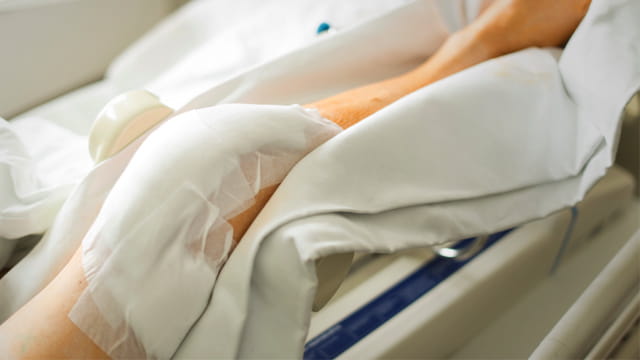New Knee Replacement Surgery Protocol Reduces Pain, Improves Outcomes
July 27, 2022 - Eden McCleskeyInjecting pain medication directly into the tibia during knee replacement surgery provided improved postoperative pain management for patients, according to a recent Houston Methodist study.
Participants who received a mixture of morphine and the antibiotic vancomycin in the tibia of their knee joint reported 33%-49% less post-surgical pain compared to those who didn't receive the intraosseous infusion.
"Intraosseous infusion allows us to control pain preemptively so knee replacement surgery patients don't have to take as much pain medicine later on," says Dr. Kevin Park, a Houston Methodist orthopedic surgeon.
The randomized, double-blind study, which looked at the safety and efficacy of the infusion, was published in the Journal of Arthroplasty in March 2022.
A previous study by Dr. Park and Drs. Stephen Incavo and Terry Clyburn found a 600% reduction in periprosthetic joint infections among total knee arthroplasty patients who received vancomycin by intraosseous administration.
Total knee replacement is a popular procedure, accounting for 54.5% of the nearly 2 million hip and knee replacement procedures performed between 2012 and 2020.
Despite advances in surgical techniques that make it possible for knee replacement patients to be discharged on the same day, most patients still experience considerable pain and discomfort in the first days and weeks of their recovery.
The goal of the surgery team is to use multimodal pain management techniques — a combination of pain medications, anti-inflammatory drugs and neurogenic agents, administered both preemptively and following the procedure — to provide better pain control with fewer narcotics.
To learn more about the study and the development of the new infusion technique, check out the Methodology feature story published by the Houston Methodist Academic Institute.


